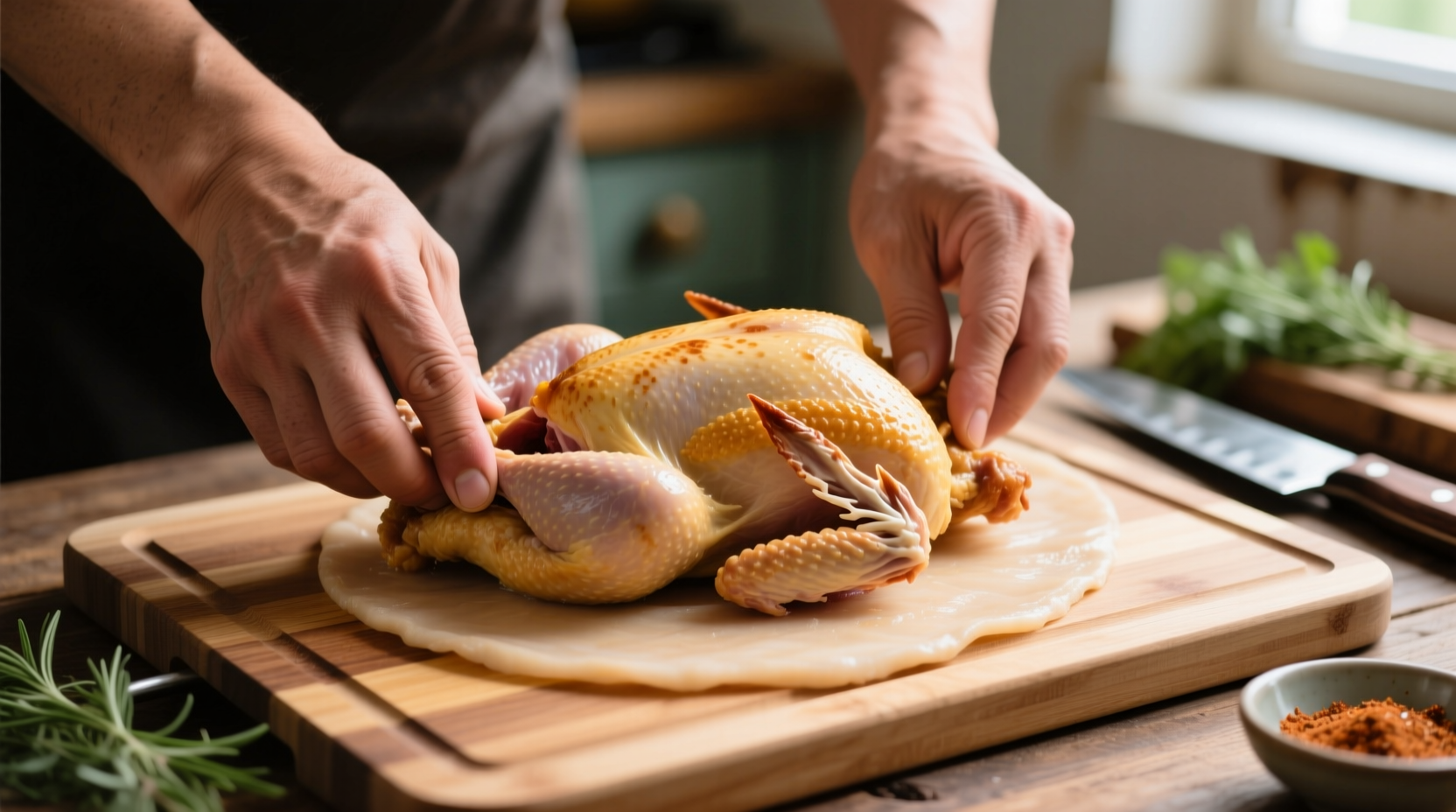Spreading your chicken flat before roasting cuts cooking time by 25-30% while ensuring perfectly crisp skin and evenly cooked meat from breast to thigh—no more dry breasts or undercooked legs. This professional technique requires just kitchen shears, 45-60 minutes total time, and reaches safe internal temperature (165°F) faster than traditional roasting.
Why Spatchcock Chicken Beats Traditional Roasting Every Time
Professional kitchens have used spatchcocking (also called butterflying) for decades to solve the fundamental problem of roasting whole chickens: the breast cooks faster than the dark meat. When you remove the backbone and flatten the bird, you create an even thickness that cooks uniformly. According to USDA food safety guidelines, this method reaches the critical 165°F internal temperature 15-20 minutes faster than conventional roasting, reducing the risk of overcooked breast meat.
| Cooking Method | Average Time (5lb chicken) | Temperature Differential | Skin Crispness |
|---|---|---|---|
| Traditional Roasting | 75-90 minutes | 15-20°F difference | Moderate (top only) |
| Spatchcock Method | 55-65 minutes | 5-8°F difference | Excellent (entire surface) |
What You'll Need: Tools and Ingredients
This streamlined process requires minimal equipment:
- Sharp kitchen shears (kitchen scissors work best—avoid serrated)
- Sturdy cutting board (chicken juices will spread)
- Instant-read thermometer (critical for food safety)
- One 4-5 lb chicken (organic or air-chilled preferred)
- 2 tablespoons high-heat oil (avocado or grapeseed)
- Salt and pepper (1 tsp salt per pound)
Step-by-Step: Mastering the Spatchcock Technique
Step 1: Properly Remove the Backbone
Place chicken breast-down on your cutting board. Position shears at the neck cavity and cut vertically along one side of the backbone toward the tail. Repeat on the opposite side to remove the entire backbone (save for stock!). America's Test Kitchen research shows this single step reduces cooking time by creating direct heat exposure to the cavity.
Step 2: Flatten the Chicken Correctly
Flip chicken breast-up and press firmly with your palm over the breastbone until you hear a crack. This breaks the sternum, allowing the chicken to lie flat. If resistance occurs, gently work the legs outward. Proper flattening ensures even heat distribution—critical for that perfect golden-brown finish.

Step 3: Seasoning for Maximum Flavor
Rub oil over entire surface, then apply salt mixture under the skin on breasts and over thighs. For best results, season at least 30 minutes before cooking—this allows salt to penetrate the meat. The James Beard Foundation recommends this technique for deeper flavor development compared to surface-only seasoning.
Step 4: Perfect Oven Method (No Flip Required)
Preheat oven to 425°F with rack in upper third position. Place chicken skin-side up on a wire rack over a baking sheet (not directly on pan—elevating ensures crisp skin). Roast 45-55 minutes until thigh meat reaches 165°F and skin shows deep golden coloring. The USDA Food Safety and Inspection Service confirms this temperature eliminates foodborne pathogens while preserving juiciness.
Troubleshooting Common Spatchcock Problems
Problem: Skin isn't crispy
Solution: Pat chicken completely dry before oil application. Increase oven temperature to 450°F for final 10 minutes.
Problem: Breast cooking too fast
Solution: Tent breast area with foil after 30 minutes while thighs continue cooking.
Problem: Uneven browning
Solution: Rotate pan 180 degrees halfway through cooking—oven hot spots cause inconsistent results.
When Spatchcocking Isn't Ideal: Context Boundaries
This technique shines for weeknight dinners but has limitations:
- Not suitable for stuffed chickens: The open cavity prevents proper stuffing retention
- Less traditional presentation: Whole roasted chicken has visual appeal for special occasions
- Requires direct oven access: Not compatible with slow cookers or certain rotisserie setups
For holiday meals where presentation matters most, consider traditional roasting. But for weeknight efficiency and superior texture, spatchcock remains unmatched.
Serving Your Perfectly Cooked Chicken
Let chicken rest 10 minutes before carving—this allows juices to redistribute. Slice parallel to the breastbone for attractive presentation. Pair with quick-roasted vegetables cooked on the same pan during the final 25 minutes. Leftovers make exceptional chicken salad or tacos the next day, with meat that stays remarkably moist compared to traditionally roasted birds.











 浙公网安备
33010002000092号
浙公网安备
33010002000092号 浙B2-20120091-4
浙B2-20120091-4